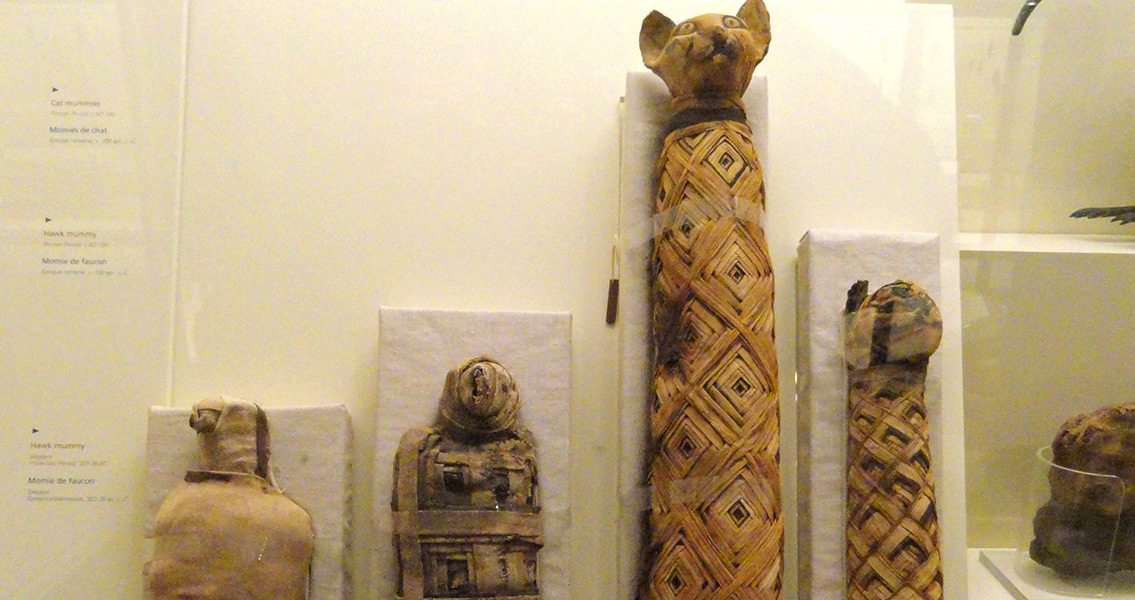<![CDATA[A study by scientists from the University of Manchester has revealed that a substantial amount of Ancient Egyptian animal mummies are not actually mummies - as there are no animal remains inside the bundles of cloth. The team of researchers from the University and the Manchester Museum used X-rays and CT scans to examine animal mummies taken from several museums across the United Kingdom. More than 300 mummified animals, from cats and dogs to birds and crocodiles have been examined in what is the largest project of its kind. It was discovered that although a third of the apparent mummies contained a complete animal skeleton, another third only contained partial remains, while the rest had no bones at all. Those studied without animal remains tended to be filled with mud, sticks, feathers and egg shells. X-ray machines and CT Scanners were used in the study, to avoid damaging the ancient artefacts. These non-invasive techniques allowed the researchers to see inside the wrappings without having to disrupt the remains themselves. The study is important, as despite an abundance of research on the Ancient Egyptian mummification of humans, very little has been performed on the process or cultural significance of animal mummification. What is clear, is that animals were mummified for a variety of different reasons, often unrelated to the mummification of people. Humans were mummified as a means to preserve the body in the afterlife, a process usually reserved for the wealthiest in society. Animals were mummified because they were considered important during their lifetimes, were beloved household pets, food offerings for humans on their journey to the afterlife, or gifts to the Gods. The animals studied as part of this project are believed to fall into the last category. Dr. Campbell Price, curator of Egypt and Sudan, at the Manchester Museum, told the BBC, "We know the Egyptians worshipped gods in animal forms, and an animal mummy allowed you some connection with the world of the gods". He went on to explain the reasoning behind the decision to mummify the animals, "Animal mummies were votive gifts. Today you'd have a candle in a cathedral; in Egyptian times you would have an animal mummy. You would go to a special site, buy an animal mummy, using a system of barter. You'd then give it to a priest, who would collect a group of animal mummies and bury them." These mummies without remains are traditionally considered to have been forgeries intended to deceive people into buying fake offerings to the gods. The team working on the project are not convinced this was always the case, however. They argue that these 'skeletonless mummies' were just as important as the animals themselves, filled with materials that had come into contact with the animals they were intended to represent. "We can't say for sure that (forgery) wasn't happening", Lidija McKnight, an Egyptologist at the University of Manchester, told LiveScience. "All we can say is that the Egyptians treated these remains with the same care as the animals themselves". The practice of mummifying mummies became widespread in Egypt in the first millenium BCE. It continued into the Roman period and only started to die out with the advent of Christianity. Visitors to temples could buy these animal mummies as tributes to the gods. Around 30 catacombs filled with these animal offerings have been found in Egypt, with each dedicated to a single animal, likely intended to represent a specific Ancient Egyptian god. The team's research forms part of an exhibition "Gifts for the Gods: Animal Mummies in Ancient Egypt", which is set to open at Manchester Museum in October. ]]>
Up to a Third of Animal Mummies Don't Contain a Body
